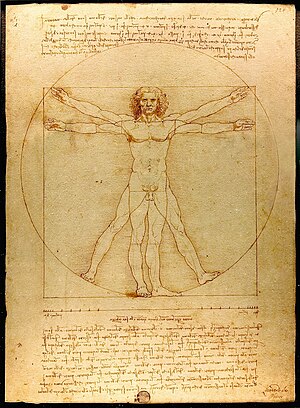Talk:Sacred geometry
| This is the talk page for discussing improvements to the Sacred geometry article. This is not a forum for general discussion of the article's subject. |
Article policies
|
| Find sources: Google (books · news · scholar · free images · WP refs) · FENS · JSTOR · TWL |
| Archives: 1Auto-archiving period: 90 days |
| Architecture Start‑class Low‑importance | ||||||||||
| ||||||||||
| Religion Start‑class | ||||||||||
| ||||||||||
| This article was nominated for deletion on 7 April 2012. The result of the discussion was keep. |
|
This page has archives. Sections older than 90 days may be automatically archived by Lowercase sigmabot III. |
Info on Moroccan/Islamic Design: link suggestion
It would be nice to have this article include more information on sacred geometry as expressed by Islamic Design. I was going to add a link to an article I wrote about Moroccan geometric mosaics, but saw no more links allowed on this page. Suggestions on how to fold the Islamic angle (geometric/non-representational art) into the article? Moroccan design, in my view, is even more primal/related to old geometric practices because of its location as an outpost of various empires (Roman, Phonecian, Arabic, Berber (not outpost, but "forgotten" culture))
Link I was going to add is: http://moroccandesign.com/moroccan-mosaics-the-art-of-zillij
165.13.206.230 (talk) 17:47, 17 August 2009 (UTC)
- Welcome to Wikipedia. I would suggest that rather than simply adding the link, if the link contains reliably sourced material that is not already present in the article, you summarize the material and use the link as a reference. thanks.TheRingess (talk) 19:33, 17 August 2009 (UTC)
sources
I added the npov tag and updated the date on the refimprove tag. There should be some sources on this article, even unreliable and primary sources are better than none at all. Voiceofreason01 (talk) 16:28, 17 September 2009 (UTC)
Not enough content, not enough detail, not enough culture
This article is overly bland. My diagnosis is that it is too POV neutral! Less provocatively stated, there should be multiple articles on sacred geometry as it is practiced in the major cultures where (some form of) geometrical design is considered sacred. Within the context of a given culture, it should be possible to intelligently discuss in rich detail such concepts as celestial alignments, sky geometry replicated in sacred structures, land enchantment alignments (ley lines), tessellations, calligraphic designs, encoding of "lucky" or significant numbers or ratios in designs, as appropriate to the culture.
My Leopard Spot (talk) 01:25, 23 September 2009 (UTC)
- Thank you for your suggestion. When you believe an article needs improvement, please feel free to make those changes. Wikipedia is a wiki, so anyone can edit almost any article by simply following the edit this page link at the top. The Wikipedia community encourages you to be bold in updating pages. Don't worry too much about making honest mistakes—they're likely to be found and corrected quickly. If you're not sure how editing works, check out how to edit a page, or use the sandbox to try out your editing skills. New contributors are always welcome. You don't even need to log in (although there are many reasons why you might want to). shoy (reactions) 01:33, 23 September 2009 (UTC)
This is a very poor article. I have altered the opening definition slightly by adding (1) and (2) on 31/10/2010 but it remains inadequate. N R Mann. —Preceding unsigned comment added by 86.172.192.30 (talk) 10:22, 31 October 2010 (UTC)
- See WP:LEAD. The lead is the summary of the article, and the article doesn't define sacred geometry the way you did in your edit. If you want to change the article, please read WP:VERIFY and make sure you source any changes. Dougweller (talk) 10:29, 31 October 2010 (UTC)
Images
Some images we could include in article



- No, I removed all the galleries since there were no explained relationship between them and the (confused and unsourced) text. They looked as images added just to decorated the articles. --'''Attilios''' (talk) 21:41, 19 June 2011 (UTC)
Quote & Reference
"Sacred geometry is the study of shapes and angles that appear in nature and represent the blueprint of creation. It is the pattern of energy that forms naturally in nature and has been studied by metaphysicians and architects, and was used by the builder's of Solomon's Temple and all the great Cathedrals. These patterns form naturally in molecules of water, snowflakes, pinecones, DNA, stars, galaxies and space, virtually everywhere... Sacred geometry is the silent language of the energy of the Universe... it is the building block of the entire Universe." - The Magdalene Awakening by L. Shannon Anderson (Sacred Escape, 2008) 64.136.26.22 (talk) 16:10, 30 August 2010 (UTC)Brad Watson, Miami, FL
'7 Classical Planets' and 4 don't cast shadows on Earth, 4 lunar phases of 7 days each: GOD=7_4 Code
I just wrote this on the 'talk page' of http://en.wikipedia.org/wiki/Classical_planet ...
'Seven Classical Planets' is the proper name and the title of this article should be corrected. These were/are the 7 moving objects seen in the heavens with the naked eye and 4 of them don't cast shadows on Earth (Venus does). They are the simple explanation for why the ancients considered the #7 sacred: "As above, so below" was/is the precept of sacred geometry'. Also, the 29.5 day lunar months were/are divided into 4 phases of 7 days (~7.4 days) each. The lunar year + 7 day week + 4 days = solar year. The ancient Egyptians observed this sacred combination of 7 & 4 in the heavens and using "On Earth as it is in the heavens", took the standard cubit of 6 palms x 4 fingers and added a palm creating the Royal cubits of 7 palms x 4 fingers. All ancient Egyptian architects used royal cubits in their designs of sacred buildings going back to at least the first Step Pyramid of Djoser at Saqqara. The Jewish menorah mystically reflects this GOD=7_4 Code with its 7 lamps and 4 arms representing the Moon, Mercury, Venus, the Sun, Mars, Jupiter, and Saturn. Having the Sun in the middle of the 7 - 4th from the right or left - was also used later by Ptolemy (see planets). This was a BIG aspect of the Ancient Mysteries! Note how the 7 days of the week in Latin were directly named after the 7 Classical Planets, but in English, 4 have been changed and named after Germanic and Norse gods. - Ben Franklin 71.196.95.141 (talk) 16:38, 13 December 2013 (UTC)


